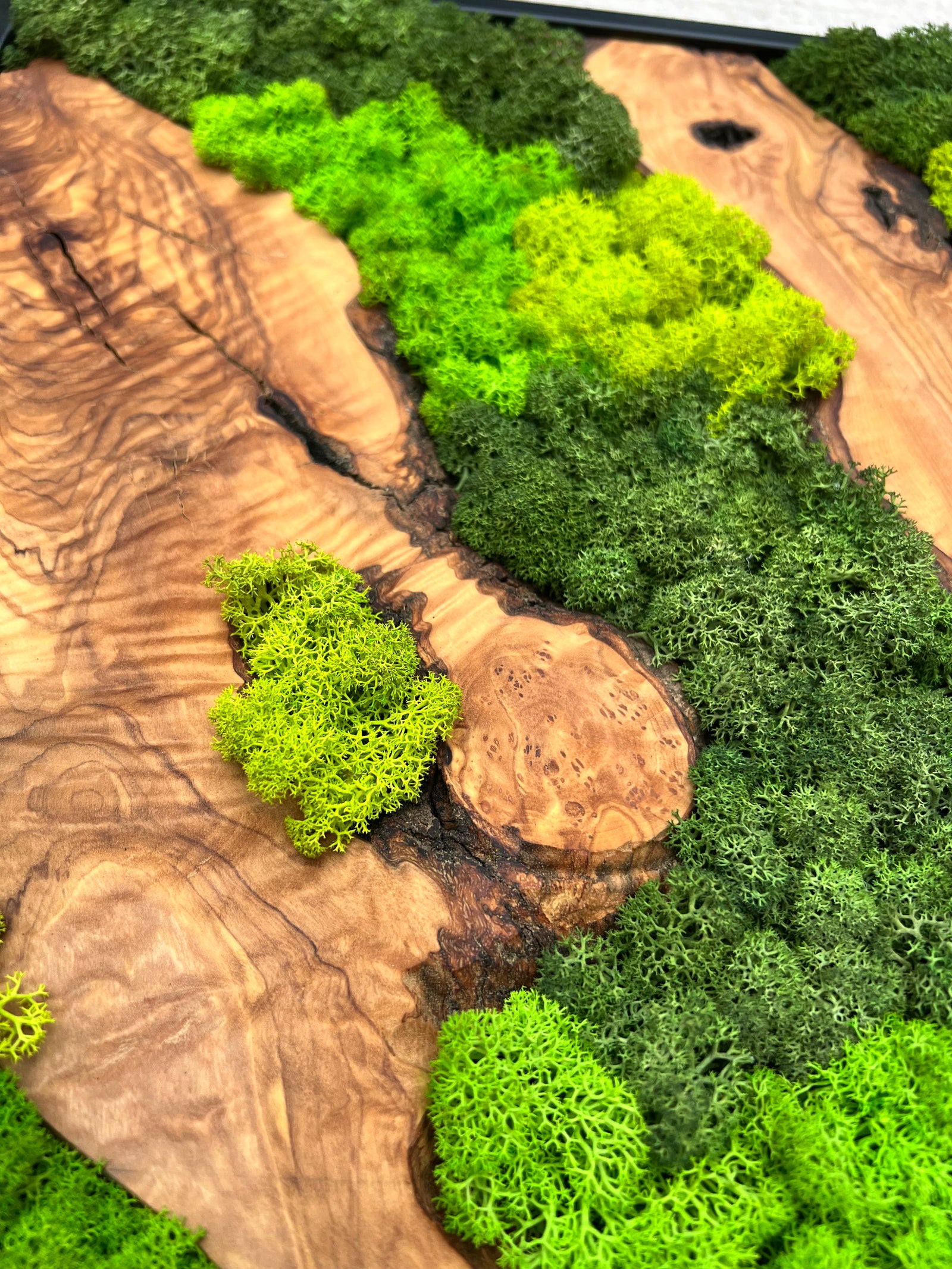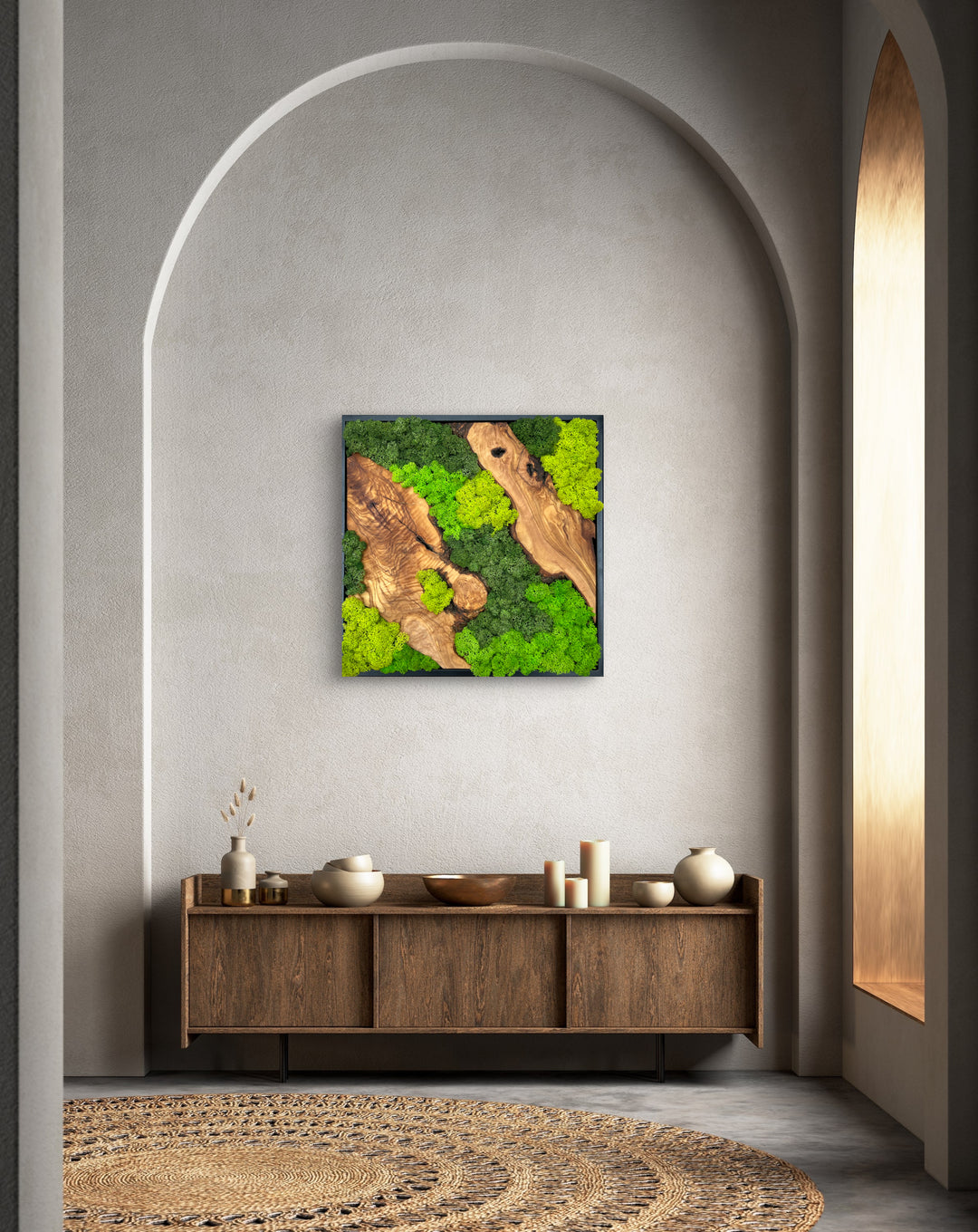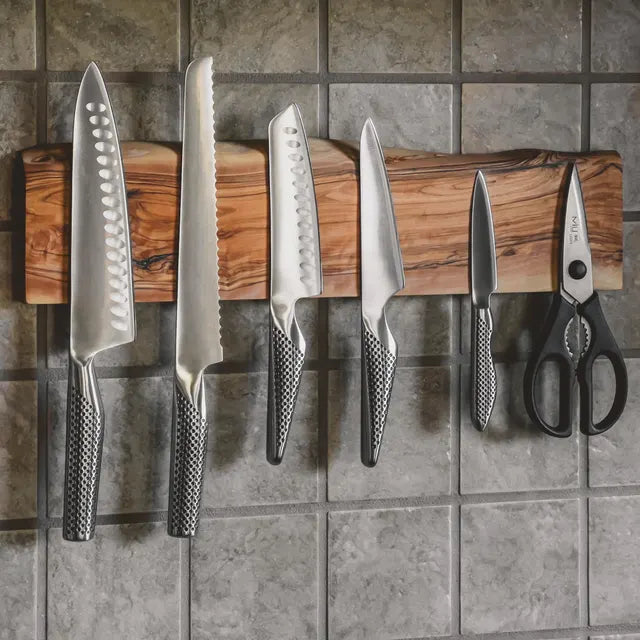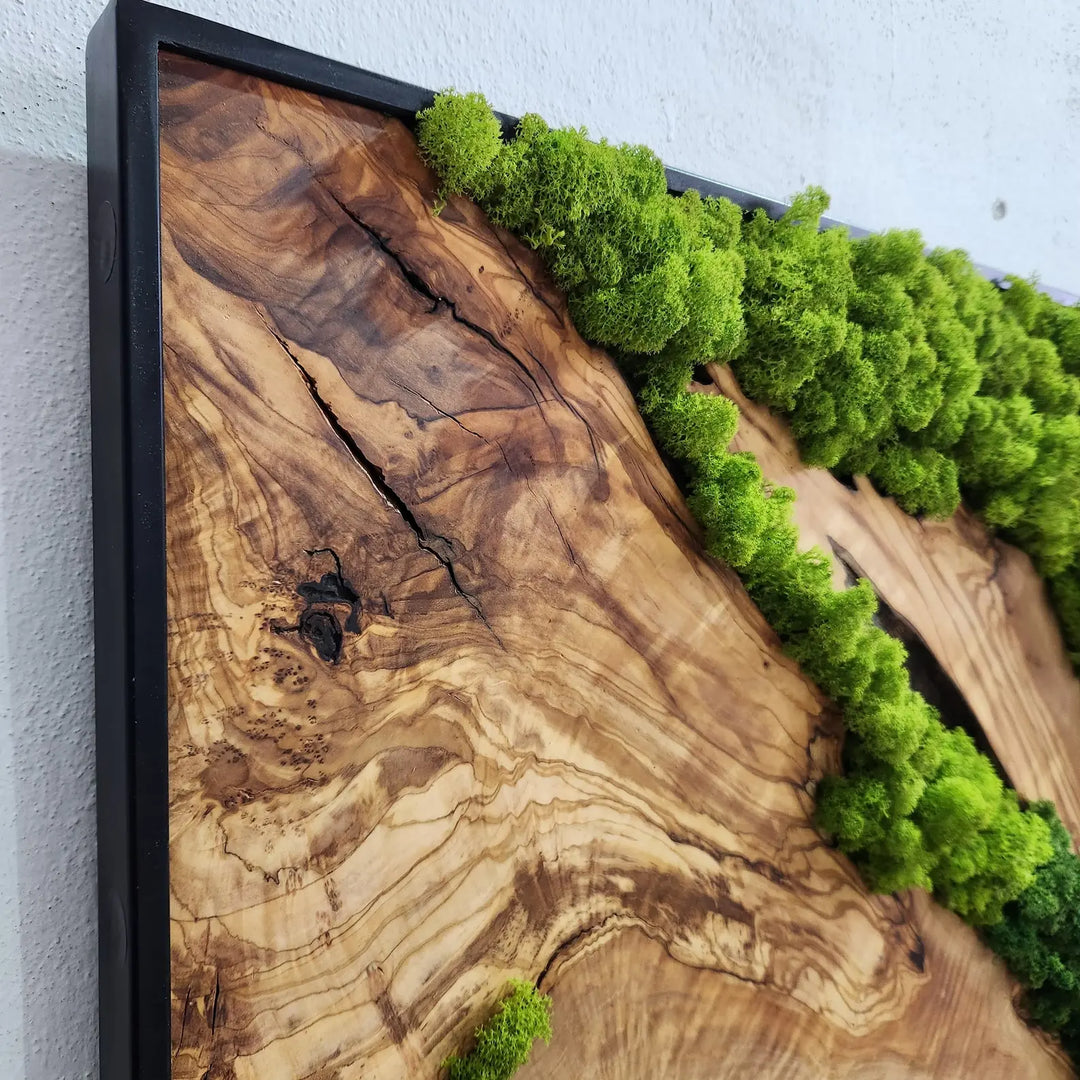Sustainable Home Decor: The Environmental Benefits of Olive Wood

In the world of home decor, the choices we make extend beyond aesthetics and comfort. Today, more than ever, there is a growing awareness of the environmental impact of our purchasing decisions. Sustainable home decor is not just a trend but a necessary shift towards protecting our planet. One material that stands out in this regard is olive wood. Known for its durability, beauty, and unique grain patterns, olive wood offers a sustainable alternative that brings a touch of nature into our homes. Let’s delve into the environmental benefits of olive wood and why it’s a superior choice compared to other materials.
Understanding Olive Wood
Olive wood comes from the olive tree, scientifically known as *Olea europaea*. This tree is primarily cultivated for its fruit and oil, but the wood it produces is equally valuable. Olive trees are slow-growing and can live for hundreds of years, which contributes to the density and hardness of the wood. This characteristic makes olive wood incredibly durable and resistant to damage, ensuring that products made from it can last for generations.
Sustainability of Olive Wood
1. Harvesting Practices
One of the most compelling aspects of olive wood is the way it is harvested. Unlike other types of wood that often come from trees felled purely for timber, olive wood is usually harvested from trees that no longer produce fruit or from pruned branches. This practice ensures that the primary purpose of the olive tree—producing olives and olive oil—is not disrupted, and the tree can continue to thrive.
2. Longevity and Durability
The density and hardness of olive wood make it a long-lasting material. Its durability means that products made from olive wood, such as cutting boards, bowls, and furniture, do not need to be replaced frequently. This reduces the demand for new materials and the environmental impact associated with manufacturing and shipping.
3. Low Environmental Impact
Olive wood processing is generally low-impact. It does not require intensive industrial processes, and the byproducts can often be reused or composted. The wood is typically air-dried, which reduces the need for energy-intensive kiln drying. Additionally, many artisans and small businesses that work with olive wood prioritize sustainable practices and use natural oils and finishes that are non-toxic and eco-friendly.
Comparison with Other Materials
1. Plastic
Plastic is ubiquitous in modern home decor due to its versatility and low cost. However, its environmental impact is significant. Plastic production relies on fossil fuels, contributes to greenhouse gas emissions, and results in non-biodegradable waste that can persist in the environment for centuries. In contrast, olive wood is a natural, biodegradable material. Products made from olive wood can decompose without releasing harmful chemicals, making them far more environmentally friendly.
2. Bamboo
Bamboo is often touted as a sustainable alternative to wood due to its rapid growth rate and renewability. However, it’s important to consider the entire lifecycle of the material. Bamboo often requires significant processing, including chemical treatments to prevent pests and mold. Moreover, bamboo products are typically manufactured in regions far from where they are sold, leading to substantial carbon emissions from transportation. Olive wood, particularly when sourced from local or regional producers, can have a much lower carbon footprint.
3. Traditional Hardwood
Many types of hardwood, such as oak and maple, are used in home decor for their strength and beauty. However, the sustainability of hardwood varies widely. Unsustainable logging practices can lead to deforestation and habitat destruction. While certified sustainable hardwoods are available, they often come with a higher price tag and still require significant energy to process. Olive wood’s sustainable harvesting practices and minimal processing needs give it an edge over traditional hardwoods in terms of environmental impact.
The Unique Beauty of Olive Wood
Beyond its environmental benefits, olive wood brings a distinct aesthetic appeal to home decor. Each piece of olive wood has a unique grain pattern, characterized by swirls and intricate lines that tell the story of the tree’s long life. This natural beauty adds character and warmth to any space, making olive wood products not just functional but also artistic.
Olive Wood in Home Decor
1. Kitchenware
Olive wood is ideal for kitchenware due to its hardness and resistance to odors and stains. Cutting boards, utensils, and bowls made from olive wood are not only durable but also safe for food preparation. The natural oils in the wood have antibacterial properties, making olive wood kitchenware a healthy choice.
2. Furniture
Olive wood furniture pieces, such as tables, chairs, and cabinets, are sturdy and can become heirloom items passed down through generations. The unique grain patterns of olive wood create striking statement pieces that enhance any room’s decor.
3. Decorative Items
From candle holders to picture frames, olive wood can be crafted into a variety of decorative items. These pieces bring a touch of nature indoors and can complement various interior design styles, from rustic to modern.
Supporting Sustainable Practices
Choosing olive wood products supports sustainable practices and small artisans who prioritize environmental responsibility. Many olive wood products are handcrafted by skilled artisans, often using traditional methods that have minimal environmental impact. By purchasing these products, consumers can contribute to a more sustainable economy and help preserve artisanal craftsmanship.
Conclusion
In the quest for sustainable home decor, olive wood emerges as a standout choice. Its environmental benefits, combined with its durability, beauty, and versatility, make it an ideal material for a variety of home decor applications. By opting for olive wood, consumers can enjoy high-quality, unique pieces while making a positive impact on the environment. As awareness of sustainability grows, olive wood is poised to become a cornerstone of eco-friendly home decor.
Understanding Olive Wood
Olive wood comes from the olive tree, scientifically known as *Olea europaea*. This tree is primarily cultivated for its fruit and oil, but the wood it produces is equally valuable. Olive trees are slow-growing and can live for hundreds of years, which contributes to the density and hardness of the wood. This characteristic makes olive wood incredibly durable and resistant to damage, ensuring that products made from it can last for generations.
Sustainability of Olive Wood
1. Harvesting Practices
One of the most compelling aspects of olive wood is the way it is harvested. Unlike other types of wood that often come from trees felled purely for timber, olive wood is usually harvested from trees that no longer produce fruit or from pruned branches. This practice ensures that the primary purpose of the olive tree—producing olives and olive oil—is not disrupted, and the tree can continue to thrive.
2. Longevity and Durability
The density and hardness of olive wood make it a long-lasting material. Its durability means that products made from olive wood, such as cutting boards, bowls, and furniture, do not need to be replaced frequently. This reduces the demand for new materials and the environmental impact associated with manufacturing and shipping.
3. Low Environmental Impact
Olive wood processing is generally low-impact. It does not require intensive industrial processes, and the byproducts can often be reused or composted. The wood is typically air-dried, which reduces the need for energy-intensive kiln drying. Additionally, many artisans and small businesses that work with olive wood prioritize sustainable practices and use natural oils and finishes that are non-toxic and eco-friendly.
Comparison with Other Materials
1. Plastic
Plastic is ubiquitous in modern home decor due to its versatility and low cost. However, its environmental impact is significant. Plastic production relies on fossil fuels, contributes to greenhouse gas emissions, and results in non-biodegradable waste that can persist in the environment for centuries. In contrast, olive wood is a natural, biodegradable material. Products made from olive wood can decompose without releasing harmful chemicals, making them far more environmentally friendly.
2. Bamboo
Bamboo is often touted as a sustainable alternative to wood due to its rapid growth rate and renewability. However, it’s important to consider the entire lifecycle of the material. Bamboo often requires significant processing, including chemical treatments to prevent pests and mold. Moreover, bamboo products are typically manufactured in regions far from where they are sold, leading to substantial carbon emissions from transportation. Olive wood, particularly when sourced from local or regional producers, can have a much lower carbon footprint.
3. Traditional Hardwood
Many types of hardwood, such as oak and maple, are used in home decor for their strength and beauty. However, the sustainability of hardwood varies widely. Unsustainable logging practices can lead to deforestation and habitat destruction. While certified sustainable hardwoods are available, they often come with a higher price tag and still require significant energy to process. Olive wood’s sustainable harvesting practices and minimal processing needs give it an edge over traditional hardwoods in terms of environmental impact.
The Unique Beauty of Olive Wood
Beyond its environmental benefits, olive wood brings a distinct aesthetic appeal to home decor. Each piece of olive wood has a unique grain pattern, characterized by swirls and intricate lines that tell the story of the tree’s long life. This natural beauty adds character and warmth to any space, making olive wood products not just functional but also artistic.
Olive Wood in Home Decor
1. Kitchenware
Olive wood is ideal for kitchenware due to its hardness and resistance to odors and stains. Cutting boards, utensils, and bowls made from olive wood are not only durable but also safe for food preparation. The natural oils in the wood have antibacterial properties, making olive wood kitchenware a healthy choice.
2. Furniture
Olive wood furniture pieces, such as tables, chairs, and cabinets, are sturdy and can become heirloom items passed down through generations. The unique grain patterns of olive wood create striking statement pieces that enhance any room’s decor.
3. Decorative Items
From candle holders to picture frames, olive wood can be crafted into a variety of decorative items. These pieces bring a touch of nature indoors and can complement various interior design styles, from rustic to modern.
Supporting Sustainable Practices
Choosing olive wood products supports sustainable practices and small artisans who prioritize environmental responsibility. Many olive wood products are handcrafted by skilled artisans, often using traditional methods that have minimal environmental impact. By purchasing these products, consumers can contribute to a more sustainable economy and help preserve artisanal craftsmanship.
Conclusion
In the quest for sustainable home decor, olive wood emerges as a standout choice. Its environmental benefits, combined with its durability, beauty, and versatility, make it an ideal material for a variety of home decor applications. By opting for olive wood, consumers can enjoy high-quality, unique pieces while making a positive impact on the environment. As awareness of sustainability grows, olive wood is poised to become a cornerstone of eco-friendly home decor.







Leave a comment